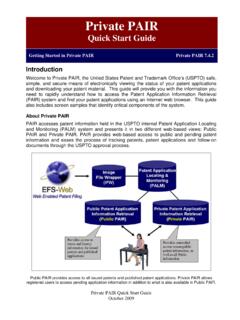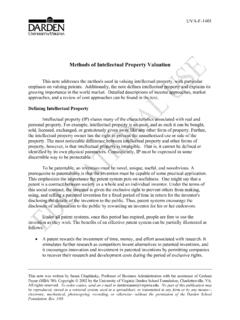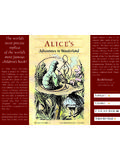Transcription of THE REVISED IMPLEMENTING RULES AND REGULATIONS …
1 1 THE REVISED IMPLEMENTING RULES AND REGULATIONS FOR PATENTS, UTILITY MODELS AND INDUSTRIAL DESIGNS Whereas, the State recognizes that an effective industrial property system is vital to the development of domestic creativity, facilitates transfer of technology, attracts foreign investments, and ensures market access for our products; Whereas, it is the policy of the State to streamline administrative procedures in granting patents and enhance the enforcement of intellectual property rights in the Philippines; Now, therefore, pursuant to the provisions of Republic Act No.
2 8293, otherwise known as the Intellectual Property Code of the Philippines, the following RULES and REGULATIONS on inventions, utility models, and industrial designs are hereby promulgated. GENERAL PROVISIONS TITLE AND CONSTRUCTION Section 1. Title of the RULES . These RULES shall be known as the REVISED IMPLEMENTING RULES and REGULATIONS for Patents, Utility Models, and Industrial Designs. Section 2. Applicability of the RULES . These RULES shall apply to all cases involving the filing and examination of patent, utility model, and industrial design applications, including the grant and post-grant requirements and processes for letters patent as well as the registration and post-registration requirements and processes of utility models and industrial designs.
3 Section 3. Construction of the RULES . These RULES shall be liberally construed in order to achieve the objectives of Republic Act No. 8293, otherwise known as the Intellectual Property Code of the Philippines. PART 1 DEFINITIONS Rule 100. Definitions. Unless otherwise specified, the following terms shall have the meaning provided in this rule: (a) Bureau means the Bureau of Patents; (b) Director means the Director of the Bureau of Patents; (c) Director General means the Head of the Intellectual Property Office; (d) Examiner means any officer or employee of the Bureau of Patents authorize to examine applications; (e) IP Code means Republic Act No.
4 8293 otherwise known as the Intellectual Property Code of the Philippines; (f) IPOPHL E-Gazette means the Intellectual Property Office s own publication where all matters required to be published under the IP Code shall be published; (g) Office means the Intellectual Property Office; (h) PCT means the Patent Cooperation Treaty; 2 (i) REGULATIONS mean this set of RULES and REGULATIONS and such RULES of Practice as may be formulated by the Director of Patents and approved by the Director General; (j) WIPO means the World Intellectual Property Office. PART 2 PATENTABILITY Rule 200.
5 Patentable Inventions. Any technical solution of a problem in any field of human activity which is new, involves an inventive step and is industrially applicable shall be patentable (Sec. 21, IP Code). Rule 201. Statutory Classes of Patentable Inventions. A patentable invention may be or may relate to: (a) A product, such as a machine, a device, an article of manufacture, a composition of matter, a microorganism; (b) A process, such as a method of use, a method of manufacturing, a non-biological process, a microbiological process; (c) Computer-related inventions; and (d) An improvement of any of the foregoing.
6 Rule 202. Non-patentable Inventions. The following shall be excluded from patent protection: (a) Discoveries, scientific theories, and mathematical methods, a law of nature, a scientific truth, or knowledge as such; * (b) Abstract ideas or theories, fundamental concepts apart from the means or processes for carrying the concept to produce a technical effect; (c) Schemes, RULES , and methods of performing mental acts and playing games; (d) Method of doing business, such as a method or system for transacting business without the technical means for carrying out the method or system; (e) Programs for computers.
7 (f) Methods for treatment of the human or animal body by surgery or therapy and diagnostic methods practiced on the human or animal body. This provision shall not apply to products and compositions for use in any of these methods; (g) Plant varieties or animal breeds or essentially biological process for the production of plants and animals. This provision shall not apply to microorganisms and non-biological and microbiological processes; (h) Aesthetic creations; and (i) Anything which is contrary to public order, health, welfare, or morality, or process for cloning or modifying the germ line genetic identity of humans or animals or uses of the human embryo.
8 *In the case of drugs and medicines involving known substances, please refer to the IMPLEMENTING RULES and REGULATIONS of Republic Act 9502, otherwise known as the Universally Accessible Cheaper and Quality Medicines Act of 2008 . 3 Rule 203. Novelty. An invention shall not be considered new if it forms part of a prior art (Sec. 23, IP Code). Rule 204. Prior Art. Prior art shall consist of: (a) Everything made available to the public anywhere in the world by means of a written or oral disclosure, by use, or in any other way, before the filing date or the priority date of the application claiming the invention.
9 Information is deemed available to the public when it is not confidential or restricted to the use by a selective group. Prior use and oral disclosure, whether within or outside the Philippines, must be proven with substantial evidence. (b) The whole contents of an earlier application for a patent, utility model, or industrial design registration, published by the Intellectual Property Office of the Philippines, filed or effective in the Philippines, with a filing or priority date that is earlier than the filing or priority date of the application; Provided, that the application which has validly claimed the filing date of an earlier application under Section 31 of the IP Code, shall be prior art with effect as of the filing date of such earlier application.
10 Provided further, that the applicant or the inventor of the invention identified in both applications are not one and the same (Sec. 24, IP Code). (c) The whole contents of corresponding foreign applications disclosing substantially the same invention, or a description thereof, published before the filing date of the application. Inventions are considered substantially the same if the composition of all important particulars, excluding mere formal, unimportant or obvious variations, define the invention. (d) Where two or more applications are independently filed with respect to the same invention, and the later applications are filed before the first application or earlier application is published, the whole contents of the first or earliest filed application published in accordance with Section 44 of the IP Code on or after the filing date or priority date of the later filed application shall be novelty destroying with respect to the later application filed.









